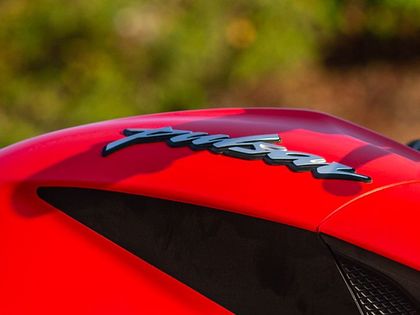New Bajaj Pulsar 250 In The Works
- by Jehan Adil Darukhanawala
- Mar 25, 2021
- | Views: 40234
Will be the first of the next-gen Pulsars
- The new 250 is likely to be a replacement for the aged Pulsar 220F.
- Everything, from the frame, motor to the mechanicals, will be revised.
- The earliest we should be able to see this new Pulsar 250 on the roads in the next couple of months.
- Battle Of The 200cc Nakeds
- Bajaj Pulsar 220F Ends Financial Year With New Set Of Clothes
- Is This The Upcoming Yezdi Roadking Scrambler?

The Bajaj Pulsar is an icon of Indian motorcycling. Having arrived at a time when the concept of performance biking barely existed (at least with regards to 4-strokes), the Pulsar revolutionised the scene, making sporty bikes accessible. It has enjoyed much success in the past two decades, but its iconic semblance seems to have diminished somewhat, particularly with the arrival of more spirited offerings like the KTM Dukes and the 4-valve TVS Apaches. The whole series is in a dire need of a generation update, and it seems Bajaj is ready to give it one.
Yes, and it all starts with the new Pulsar 250.
Bajaj is developing an all-new affordable platform for the Pulsar series, starting with the engine. The new motor will displace around 250 cubes. Unlike the KTM-based 250cc engine currently found on the Dominar 250, this unit is going to be less sophisticated. It will definitely not get liquid-cooling, opting for an air-/oil-cooled setup and might not even get a 4-valve head.
The new motor will bear no similarity to the current-gen Pulsar 220F’s unit. The engine has already been bored-out to its maximum potential, and going a step further isn’t possible.
This new heart will also get a new frame, which is likely to be a sort of an amalgamation of the current perimeter frame of the NS series and the standard series’ double downtube setup. To keep costs in check, a conventional telescopic fork will soldier on. But to keep up with the times, Bajaj will finally be upgrading to a monoshock setup at the rear in the mainline Pulsars.
Bajaj will be adopting a top-down approach for the new Pulsar series. While we know that there is a 250 incoming, other small engine-displacement Pulsars are yet to be confirmed. Whether the existing cubic capacity range of 125, 150, and 180 will be carried forward remains to be seen. But given the way the Indian motorcycling segment is placed, we guess the best way forward for the Pulsar series would be a 125, a 160, and a 200. These three would do well in complementing the large 250 in the coming years.
This begs the question: What happens to the NS/RS series of bikes? While the fate of the NS160 is uncertain, the NS200 and RS200 will continue to remain on sale depending on their demand. With these two, Bajaj’s focus area remains its exports business.
Do you think this is the right approach for the Pulsar series going forward? Or would you rather Bajaj take a leaf out of TVS’s books and adopt a slightly more aggressive approach like it did with the Apache RTR 200 4V and RTR 160 4V? Do let us know in the comments and holler at us on our social media pages.
